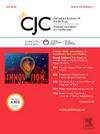From Surviving to Thriving: A Roadmap for Reinventing Cardiac Rehabilitation in Pediatric Congenital Heart Disease
IF 5.8
2区 医学
Q1 CARDIAC & CARDIOVASCULAR SYSTEMS
引用次数: 0
Abstract
Exercise is an essential component of the cardiac care of children with congenital heart disease (CHD), and safe and effective exercise counselling by the medical team is important early in life to develop positive physical activity and exercise habits. Without it, children are at risk for sedentariness and related comorbidities in childhood and adulthood. Pediatric cardiologists can guide patients to a cycle of positive fitness through exercise counselling, promotion, prescription, and/or supervised exercise training similar to adult cardiac rehabilitation (ACR). ACR has improved exercise capacity, mortality, and quality of life in adults with acquired heart disease. Similar outcomes have been shown in exercise training for adult and pediatric CHD. Exercise training specific to pediatric CHD is not widely available but is expanding in response to growing need and increasing demand. Although ACR provides a framework for structured exercise training, approaches to pediatric exercise training must be individualized and innovated upon to be successful for children. I propose that the ACR model must be reinvented for children with CHD by integrating 6 missing pieces. First, the underlying goal should be to optimize fitness, not rehabilitate to a previous state of health. Second and third are training mental skills and motor skills. Fourth, play-based exercise training is needed to foster a positive relationship with exercise. Fifth, family-focused exercise interventions can address root causes of sedentariness. Finally, building communities in which positive fitness is a priority will be essential to long-term sustainability.
从生存到茁壮成长:重塑小儿先天性心脏病心脏康复的路线图》。
运动是先天性心脏病(CHD)患儿心脏护理的重要组成部分,医疗团队提供的安全有效的运动指导对患儿早期养成积极的体力活动和运动(PAE)习惯非常重要。如果不这样做,儿童在童年和成年后就会面临久坐不动和相关合并症的风险。儿科心脏病专家可以通过运动咨询、推广和处方,以及/或类似于成人心脏康复(ACR)的指导性运动训练,引导患者形成积极的健身循环。ACR 提高了患有后天性心脏病的成人的运动能力、死亡率和生活质量。成人和儿童心脏病的运动训练也取得了类似的效果。专门针对小儿心脏病的运动训练尚未广泛开展,但随着需求的增长和需求的增加而不断扩大。虽然 ACR 为结构化运动训练提供了一个框架,但儿科运动训练方法必须因人而异、不断创新,才能为儿童带来成功。我建议,必须通过整合六个缺失部分,为患有心脏病的儿童重塑 ACR 模式。首先,基本目标应该是优化体能,而不是康复到之前的健康状态。第二和第三是训练心理技能和运动技能。第四,需要以游戏为基础的运动训练,以培养与运动的积极关系。第五,以家庭为重点的运动干预可以从根本上解决久坐不动的问题。最后,建立以积极健身为重点的社区对于长期可持续性发展至关重要。
本文章由计算机程序翻译,如有差异,请以英文原文为准。
求助全文
约1分钟内获得全文
求助全文
来源期刊

Canadian Journal of Cardiology
医学-心血管系统
CiteScore
9.20
自引率
8.10%
发文量
546
审稿时长
32 days
期刊介绍:
The Canadian Journal of Cardiology (CJC) is the official journal of the Canadian Cardiovascular Society (CCS). The CJC is a vehicle for the international dissemination of new knowledge in cardiology and cardiovascular science, particularly serving as the major venue for Canadian cardiovascular medicine.
 求助内容:
求助内容: 应助结果提醒方式:
应助结果提醒方式:


